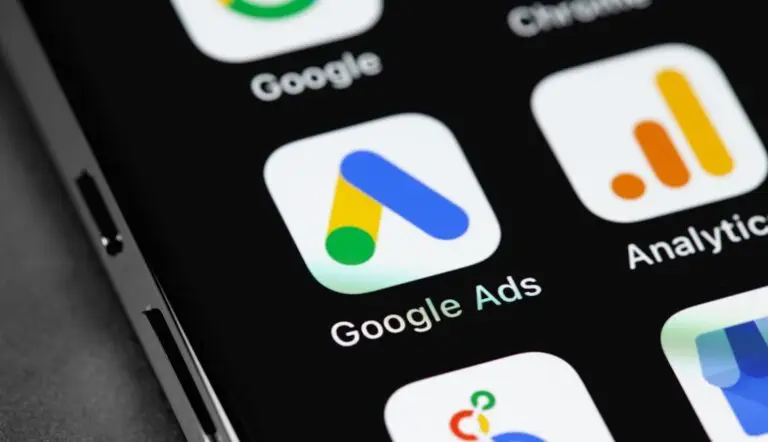Digital Advertising Services
Let’s build you a successful digital advertising campaign and boost your sales!
Contact Us Today
Home » Advertising Services
-
Published by: Vitaliy
- Last Updated: May 15, 2024
As a digital marketing agency, we specialize in online advertising for brick-and-mortar and online businesses. Our primary goal is to grow your business by driving targeted, motivated traffic to your website and convert this traffic into leads, and leads into clients.
While it might seem simple, achieving this objective is not always easy. Before launching any campaign, we review dozens, if not hundreds, of data points to determine the client profile, calculate the main metrics and KPIs for the business, and set the goals.

Based on our findings, we develop a marketing strategy specifically tailored to your business, recommending specific ad formats and advertising platforms. For example, for some businesses, we might recommend Google ads (PPC, Display or YouTube); for others, it might make more sense to do social media advertising (Facebook, Instagram, TikTok, LinkedIn, Twitter etc).
How We Build Successful Digital Advertising Campaigns
Whether we advertise through PPC, video ads, display ads, or social media, the key to success is always proper analysis, planning, and preparation. Strategy and planning come first, and execution comes after. Here are the stages we identify for every project as an ad agency.
Clear Business Goals are Critical
Identify what you want to achieve with your advertising campaign. Goals can range from increasing brand awareness, generating leads, and driving web traffic to boosting sales. Your goals should be SMART: Specific, Measurable, Achievable, Relevant, and Time-bound. Here is a good list of questions to ask yourself:
- Do you want to run lead gen ads, or do you want to advertise for e-commerce?
- What is your business’s primary objective? Do you plan to advertise for brand awareness, customer engagement, traffic, or conversions?
- What are our main KPIs? Is it impressions, clicks or conversions? How do you define conversion?
- Who is your target audience?
The most typical response in this case is: I want to increase the number of leads/sales for my business. For most customers, growing brand awareness will be a secondary outcome, while the primary focus will be on specific conversions, such as inquiries from interested clients or on-site purchases.
Know Your Key Metrics
Advertising in the digital space revolves around some elementary math. It all comes down to this simple principle: the amount you make from every closed deal should be greater than the amount you pay to acquire each lead. Pretty common sense, right? Now, let’s break it down into some formulas and metrics.
Cost per Acquisition (CPA)
Cost per acquisition shows how much it costs to acquire a lead or generate a sale. Under user acquisition, we can understand the following on-site actions: call, form submission, or purchase. It is calculated as the total advertising amount divided by the number of acquisitions.

Average Order Value (AOV)
This KPI is usually expressed through some monetary value. This metric shows how much, on average, each client is spending with you. Let’s imagine we have two clients: one has made a purchase of $100, and the other one made a purchase of $1000. The AOV on these two clients will be $550
The formula in this case would be: ($100+$1000)/2 = $550
Average Profit Margin
This metric is usually expressed as a percentage, e.g., 30% profit. This means you make 30% off every contract/purchase from your website. Knowing your margins helps to calculate the maximum allowable cost per acquisition.
Allowable Cost Per Acquisition
This metric shows the maximum permissible cost to acquire leads or clients profitably. Let’s imagine our AOV is $500, and the margin is 30%. We can calculate our margin in monetary form: $500 * 0.3 = $150.
Consequently, our maximum allowable CPA is $500 – $150 = $350.
Maintain Positive ROI
If we acquire the client for more than $350, your ROI (Return on Investment) will be negative, and the business will lose money with every ad dollar.
Conversely, if your CPA is below $350, your advertising campaign will be profitable; if it is profitable, it can be scaled.
Give Your Business a Marketing Boost with Adhouse Digital Advertising
Understand Your Target Audience
Knowing your target audience is crucial, especially for advertising on social media. Research and create detailed buyer personas of your potential customers; this will help you better understand their needs, preferences, and online behavior. As a result, you will be able to tailor your messaging and choose the right platforms to reach them effectively.
If you are a new business with no historical data, build your client personas (or avatars) from scratch. Address the following points to create a complete picture:
- Demographics: This includes age, gender, income, education, occupation, and marital status. These details provide a superficial, basic outline of your ideal customer.
- Geographics: The location of your ideal customer can influence their purchasing behavior. This could mean a specific country, city, or even a type of setting (urban vs. rural).
- Psychographics: This dives into the psychological attributes of your target audience, such as interests, hobbies, values, attitudes, and lifestyle. Understanding these can help you appeal to their intrinsic motivations and how they perceive the world.
- Challenges and Pain Points: Identifying the problems your customer avatar faces is crucial. Understanding their challenges allows you to tailor your messaging and products to offer solutions.
- Goals and Aspirations: Knowing what your ideal customer aims to achieve, both personally and professionally, can help you align your product or service as a tool to help them reach these goals.
- Preferred Media: Understanding where your customer avatar spends their time online, the social media platforms they use, and the type of content they consume can guide you in deciding where to focus your marketing efforts.
- Shopping Behaviors: This includes how they prefer to shop, their decision-making process, and what factors influence their buying decisions, such as price sensitivity, brand loyalty, or product features.
Use of Google Analytics
If you are an existing business, use Google Analytics and analyze your historical data to understand your perfect client. Data from your past orders usually turns out to be the most valuable, showing you critical information such as gender, age, and location. Use this information to create the profile of your perfect client, which, in turn, helps to construct a powerful ad campaign.

Conversion Tracking
Conversion tracking is key to measuring the efficiency of your digital advertising campaign. To achieve this goal, we use tracking pixels and implement server-side tracking.
Campaign Analysis and Ongoing Optimization
Once a campaign is launched, we constantly monitor it and analyze its main metrics, including CTR, CPC, CPA, and ROAS (if applicable). We compare them to industry benchmarks and make optimizations to improve campaign performance. This is an ongoing process. Underperforming campaigns are usually shut down, while the better-performing campaigns are scaled.
Digital Advertising Services We Provide
PPC Campaigns
- Google PPC
- Amazon PPC
- Bing PPC
Other Types of Google Ads
Social Media Advertising
- Facebook/Instagram Ads
- TikTok Ads
- Linkedin Ads
Digital Strategy
We pick the best-performing ad platforms for your business and make recommendations and give improvement ideas for your ongoing campaigns.
Frequently Asked Questions
Paid ads allow you to find your client quickly and virtually instantly. Your ads get shown to potential clients in top placements, enticing users to purchase your goods or services.
Advertising services include analyzing the client’s business, setting clear business objectives, identifying the target audience, calculating key KPIs and metrics, and creating and optimizing campaigns.
Advertising services is just one of the many marketing services, which is a broader term. Marketing services can also include, branding, positioning, SEO, website development, CRO, copywriting and many other services.
Finding a good marketer is like finding a good doctor; a trusting, working relationship is critical to the project’s success.
Read reviews. Ask for case studies. Ask for references and examples of past work. See if what they show you is realistic (sometimes agencies try to pass other people’s results as their own). Finally, see if you feel comfortable working with these people.
Indirectly, yes. Such ads as Google PPC ads or Amazon PPC can provide additional insights regarding the keywords that convert visitors into clients. When you launch a PPC campaign, you will notice that specific keywords convert better than others. Take these keywords and incorporate them into your SEO strategy.
